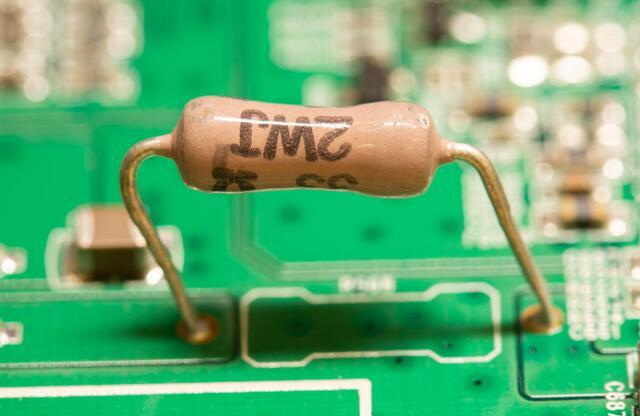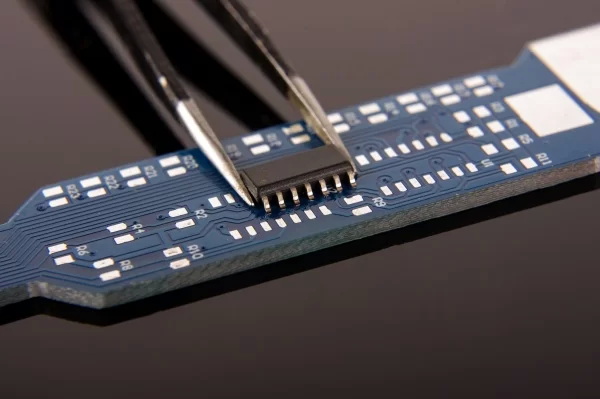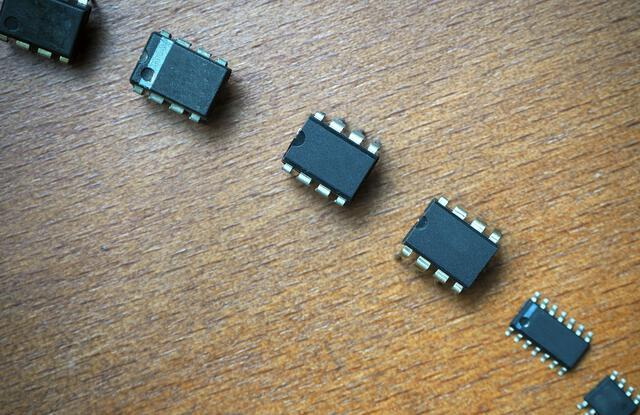Content Menu
● Introduction
● Understanding Reel Sizes
>> Common Reel Sizes
● Factors Influencing Reel Size Selection
>> Machine Compatibility
>> Component Size and Type
>> Production Volume
>> Environmental Considerations
● Advantages of Different Reel Sizes
>> 7-Inch Reels
>> 13-Inch Reels
● Detailed Analysis of Reel Sizes
>> Impact on Production Efficiency
>> Cost Implications
>> Technological Advancements
>> Customization Options
● Best Practices for Selecting Reel Sizes
● Case Studies on Reel Size Selection
>> Case Study 1: High-Volume Electronics Manufacturer
>> Case Study 2: Small-Batch Prototyping Company
● Conclusion
● FAQ
>> 1. What is the most common reel size for SMT components?
>> 2. How does reel size affect production efficiency?
>> 3. Can all SMT machines handle both 7-inch and 13-inch reels?
>> 4. Why are smaller reels used in some production environments?
>> 5. What factors should be considered when choosing a reel size?
● Citations:
Introduction
Surface Mount Technology (SMT) is a widely used method in electronics manufacturing, where components are mounted directly onto the surface of printed circuit boards (PCBs). A critical aspect of this process is the reel size for SMT components, which significantly influences manufacturing efficiency, cost, and the overall production workflow. This article aims to explore the best reel sizes for SMT components, considering various factors such as machine compatibility, component size, production volume, and environmental implications.

Understanding Reel Sizes
Reel sizes are generally measured in inches, with the most common sizes being 7-inch and 13-inch reels. The choice of reel size affects the efficiency of pick-and-place machines used in PCB assembly. Smaller reels, like the 7-inch, are typically utilized for smaller production runs or when space constraints exist. In contrast, larger reels, such as the 13-inch, are favored for high-volume production due to their ability to hold a greater number of components.
Common Reel Sizes
- 7-Inch Reels: Often used for small to medium production runs.
- 13-Inch Reels: Preferred for large-scale manufacturing due to higher capacity.
Factors Influencing Reel Size Selection
Machine Compatibility
Not all SMT machines can accommodate every reel size. It is vital to ensure that the selected reel size is compatible with the pick-and-place machines utilized in the production line. Some machines are designed specifically for certain reel diameters, limiting options for manufacturers.
Component Size and Type
The dimensions and types of components being used play a significant role in determining the appropriate reel size. Larger components may necessitate larger reels to ensure proper fit and dispensing during assembly. Additionally, different types of components might have varying requirements regarding spacing and orientation on the reel.
Production Volume
For high-volume production environments, larger reels are generally more efficient as they reduce the frequency of reel changes, thereby minimizing downtime. Conversely, smaller reels may be more cost-effective for smaller production runs or prototyping.
Environmental Considerations
The environmental impact of packaging and waste management is becoming increasingly important in manufacturing processes. Larger reels can lead to less waste in terms of discarded materials and packaging due to fewer changes required during production. This aspect is crucial as companies strive to minimize their environmental footprint.
Advantages of Different Reel Sizes
7-Inch Reels
- Flexibility: Ideal for small to medium production runs.
- Space-Saving: Suitable for environments with limited space.
- Cost-Effective: Lower initial investment compared to larger reels.
- Ease of Handling: Lighter and easier to manage during setup and changeovers.
13-Inch Reels
- High Capacity: Can hold more components, reducing the need for frequent changes.
- Efficiency: Ideal for large-scale production, minimizing downtime.
- Compatibility: Often compatible with a wide range of SMT machines.
- Reduced Labor Costs: Fewer reel changes mean less labor time spent on setup.
Detailed Analysis of Reel Sizes
Impact on Production Efficiency
The size of the reel directly impacts the production efficiency of SMT processes. Larger reels reduce the frequency of changes required during production runs. This reduction in downtime can lead to substantial improvements in overall efficiency. In contrast, smaller reels might be more suitable for prototyping or small batch productions where flexibility and quick changes are essential.

Cost Implications
The cost associated with reels can vary significantly based on their size and material composition. While larger reels may have a higher upfront cost, they can yield long-term savings due to decreased downtime and increased productivity. Smaller reels might be more economical for short runs or when budget constraints are a primary concern.
Technological Advancements
With ongoing advancements in technology, newer SMT machines are being engineered to handle a broader range of reel sizes. This flexibility allows manufacturers to optimize their processes based on specific production needs—whether involving small intricate components or larger bulkier parts.
Customization Options
Some manufacturers offer customized reel sizes tailored to specific production requirements. This customization is particularly beneficial for unique components that do not conform to standard reel sizes. By collaborating closely with suppliers, manufacturers can ensure their reel sizes meet their exact needs.
Best Practices for Selecting Reel Sizes
When selecting the appropriate reel size for SMT components, consider implementing these best practices:
1. Assess Production Needs: Evaluate your current and future production volumes to determine whether you need flexibility or high capacity.
2. Evaluate Component Types: Analyze the types of components you will be using regularly; this will help you decide whether smaller or larger reels are necessary.
3. Consult Machine Specifications: Always refer to your pick-and-place machine specifications before making a decision on reel size compatibility.
4. Consider Supply Chain Logistics: Think about how reel sizes will impact your supply chain logistics—larger reels might require more storage space but could reduce transportation frequency.
5. Plan for Changeovers: If your operations require frequent changeovers between different component types or sizes, consider smaller reels that allow quicker transitions.
Case Studies on Reel Size Selection
To further illustrate the impact of reel size selection on manufacturing efficiency, consider these case studies:
Case Study 1: High-Volume Electronics Manufacturer
A leading electronics manufacturer switched from 7-inch reels to 13-inch reels after analyzing their production data. They found that by making this change:
- They reduced changeover times by 30%.
- Overall productivity increased by 20% due to fewer interruptions.
- The company saved significantly on labor costs associated with frequent reel changes.
Case Study 2: Small-Batch Prototyping Company
A small prototyping company focused on developing new electronic devices opted to stick with 7-inch reels because:
- Their production volumes were low and varied frequently.
- The flexibility allowed them to quickly adapt their inventory based on project demands.
- They minimized waste by only ordering what was necessary for each project.
These examples highlight how understanding specific operational needs can guide manufacturers toward selecting the most appropriate reel sizes.
Conclusion
Choosing the right reel size for SMT components is a critical decision that can significantly affect manufacturing efficiency and cost-effectiveness. By carefully considering factors such as machine compatibility, component size, production volume, and environmental implications, manufacturers can select the most suitable reel size tailored to their operational needs.

FAQ
1. What is the most common reel size for SMT components?
The most common reel sizes for SMT components are 7-inch and 13-inch. These sizes are widely used due to their compatibility with most SMT machines and their ability to accommodate various production volumes.
2. How does reel size affect production efficiency?
Reel size affects production efficiency by influencing how often reels need to be changed during assembly. Larger reels reduce change frequency, thus minimizing downtime and enhancing overall efficiency.
3. Can all SMT machines handle both 7-inch and 13-inch reels?
Not all SMT machines can handle both types of reels; it's essential to verify machine specifications before selecting a reel size.
4. Why are smaller reels used in some production environments?
Smaller reels are often utilized in environments where space is limited or when flexibility and cost-effectiveness are prioritized over volume.
5. What factors should be considered when choosing a reel size?
When selecting a reel size, consider machine compatibility, component dimensions, expected production volume, and specific manufacturing requirements.
Citations:
[1] https://forum.digikey.com/t/importance-of-tape-and-reel-specs/4790
[2] https://www.compuphase.com/electronics/minireel.htm
[3] https://www.onsemi.com/pub/collateral/brd8011-d.pdf
[4] https://electronics.stackexchange.com/questions/699703/what-should-be-the-minimum-number-of-smd-components-on-a-reel-minimum-tape-leng
[5] https://www.analog.com/media/en/package-pcb-resources/package/tape-reel-rev-o.pdf
[6] https://www.vishay.com/docs/80125/smdtapereel.pdf
[7] https://www.ti.com/lit/ug/snoa403i/snoa403i.pdf




















